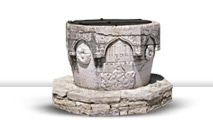
- Sečovlje Salt Pans - Dragonja River Valley
- Sv. Peter - Nova vas - Padna
- Pomjan - Nature Park: Karst Edge - Socerb
- Črni Kal - Osp - Kubed
- Momjan - Grožnjan - Pietrapelosa - Mirna
- Baštija - Kostanjica - Parenzana
- Oprtalj - Završje - Livade - Zrenj
- Istarske toplice - Motovun Forest - Višnjan
- Cave Mramornica - Feštini Kingdom - Cave Baredine
- Lim Bay - Kloštar - Kontija - Dvigrad
- Kanfanar - Bale - Palud - Vodnjan -Islands Brijuni - Fažana
- Svetvinčenat - Tinjan - Pićan - Gračišće
- Belaj - Šumber - Kožljak - Paz
- Čepićko Field - Kršan - Boljun Castle - Lupoglav
- Plomin - Kvarner Gulf - Brseč
- Nature park Učka - Mošćenice
Sv. Peter - Nova vas - Padna
Sv. Peter
The three leaf clover of Istrian villages is a protected cultural heritage site, and its inhabitants mostly engage in olive and grape growing.
Sv. Peter was first mentioned in the beginning of the 11th c., and in the 13th c. it came under the rule of Venice. In the first geographical map of Istria dating from the 16th c. it was recorded as S. Pietro dell'Amata and from 1954 to 1992 the village was called Raven. Over the course of its history it was under Venetian and Austrian rule. In the village is St. Peter's Church with a unique example of Renaissance sculpture – stone relief altar, by the workshop of Pietro Lombardo from Venice.
A special attraction is also the ethnological collection in Tonina's House with a torkla – 400-year-old olive press, on the ground floor.

















